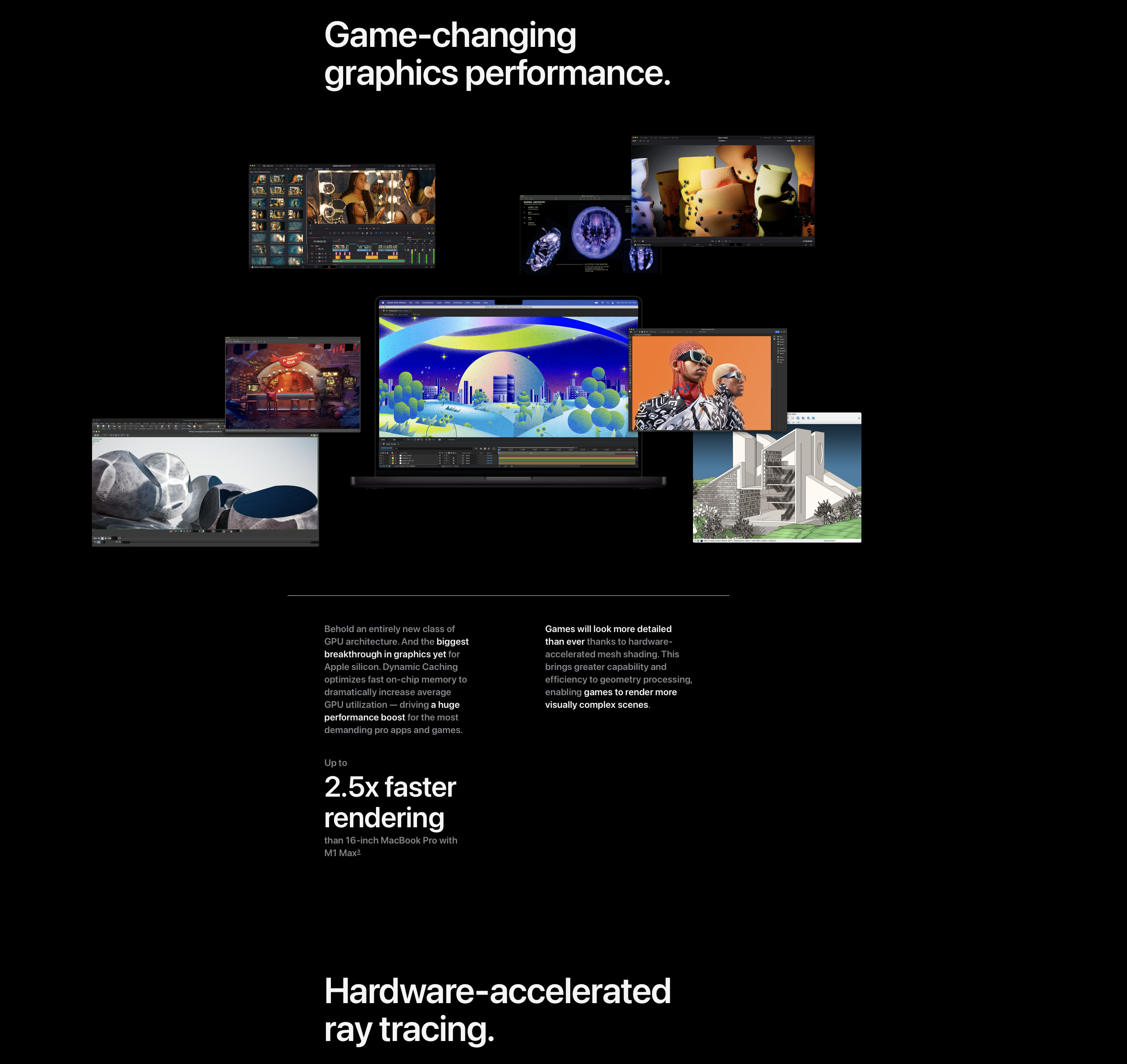I suppose it depends what constitutes a major change. I guess there are some principles that will guide their decisions going forward which don’t change. Having said that, according to what I’ve read, both the cpu cores and gpu are new.If I may posit some ideas on Apple Silicon as a whole.....
I believe that the M1, M2 and M3 are all, essentially, the same base design. Sure the core designs have evolved a little, and the GPU has been optimised, and most recently we have added new features. But the core, 'CORE' design concept has vastly remained the same.
- Arm v8.x instructions for the CPU cores.
- The raster engine in the GPU hasn't changed much.
I believe between M1 and M2 they 'fixed' some GPU scaling issues to do with cache (correct me if I'm wrong).
Other than that, what we're seeing here is M1 with two generations of clock speed boosts thanks to process improvements, and more cores, also thanks to process improvements and die space.
I know I'm vastly oversimplifying, but we haven't seen MAJOR changes.
So - my point - I believe that, like Intel, they stick with the same foundational design concepts for a few 'generations' before making a large jump to the next thing. Assuming in our case it will be Arm v9, and new GPU cores.
Maybe M4 will be that new generation. A larger leap in IPC, and jump in single-core performance. That said - no other CPU manufacturer is getting huge IPC improvements these days, and for Intel even shrinking the process will just result in faster clocks and more cores more than likely.
It appears that Apple does need to improve raster performance on the GPU cores for them to be able to compete with the higher end parts of nVidia and AMD. While Apple has never really tried to compete at the top with GPU, there's no reason why they shouldn't want to, given they already do with CPU.
One of the heads of gpus at Apple writes:
"it has been a long & satisfying journey to build this brand new GPU. I remember as if it were yesterday the first meeting we had to answer the question: "What GPU should we build next?". We had so big ambitions: scary and unbelievable in retrospect. But the end result is a scary fast GPU with never before seen architecture, HW ray tracing & mesh shading."

Gokhan Avkarogullari (@gavkar@mastodon.gamedev.place)
Attached: 1 image it has been a long & satisfying journey to build this brand new GPU. I remember as if it were yesterday the first meeting we had to answer the question: "What GPU should we build next?". We had so big ambitions: scary and unbelievable in retrospect. But the end result is a...
Also both the P cores and E cores are new according to Apple. Some confirmation of this from here:
Dougall (@dougall@mastodon.social)
Quick first impressions of the new P-core in the A17 Pro: * 9 wide decode/frontend (up from 8), for 9-per-cycle MOVs (register and immediate) and NOPs. * 8 integer units (up from 6), four of which can handle flag operations (up from 3). * 6-per-cycle ADR (up from 4). * Load/store/SIMD throughput...



